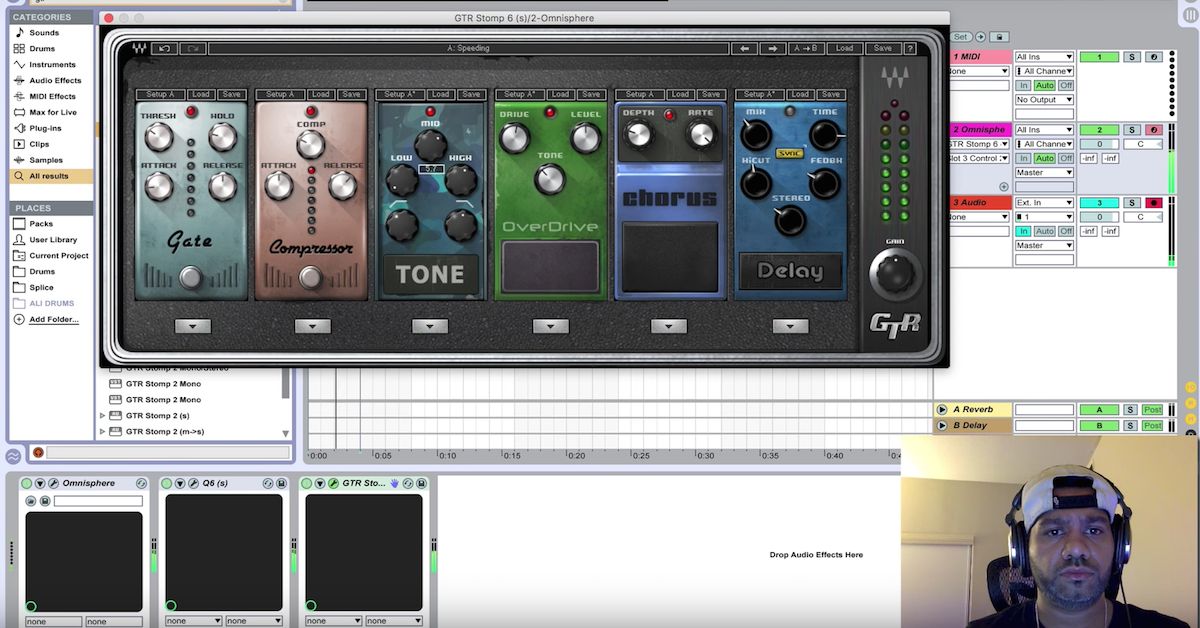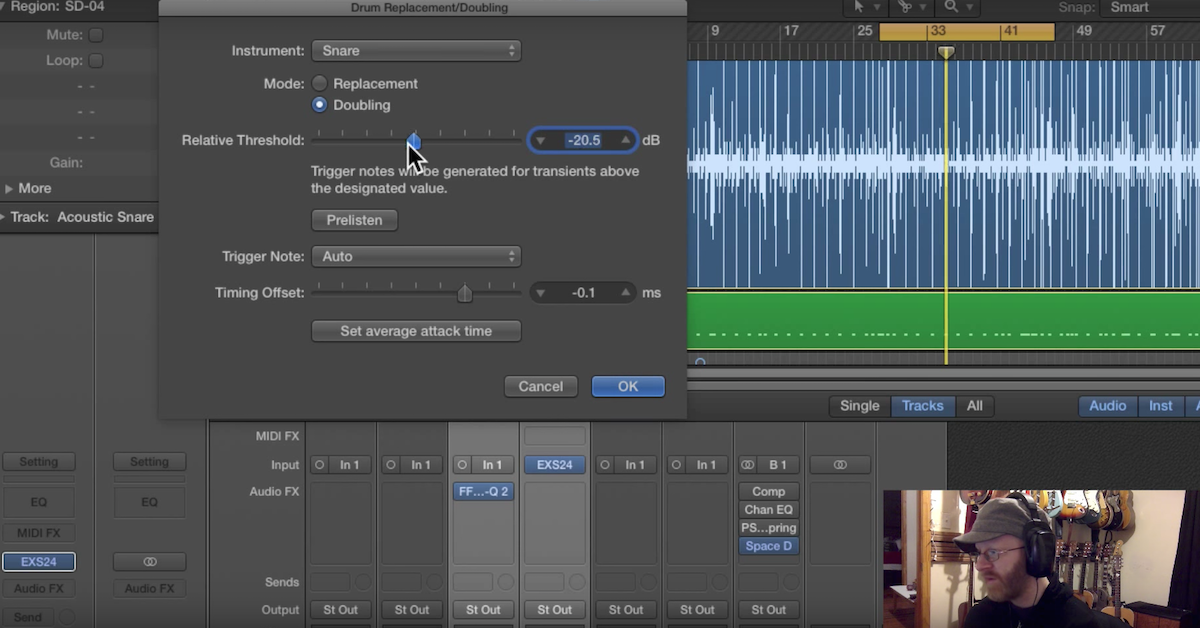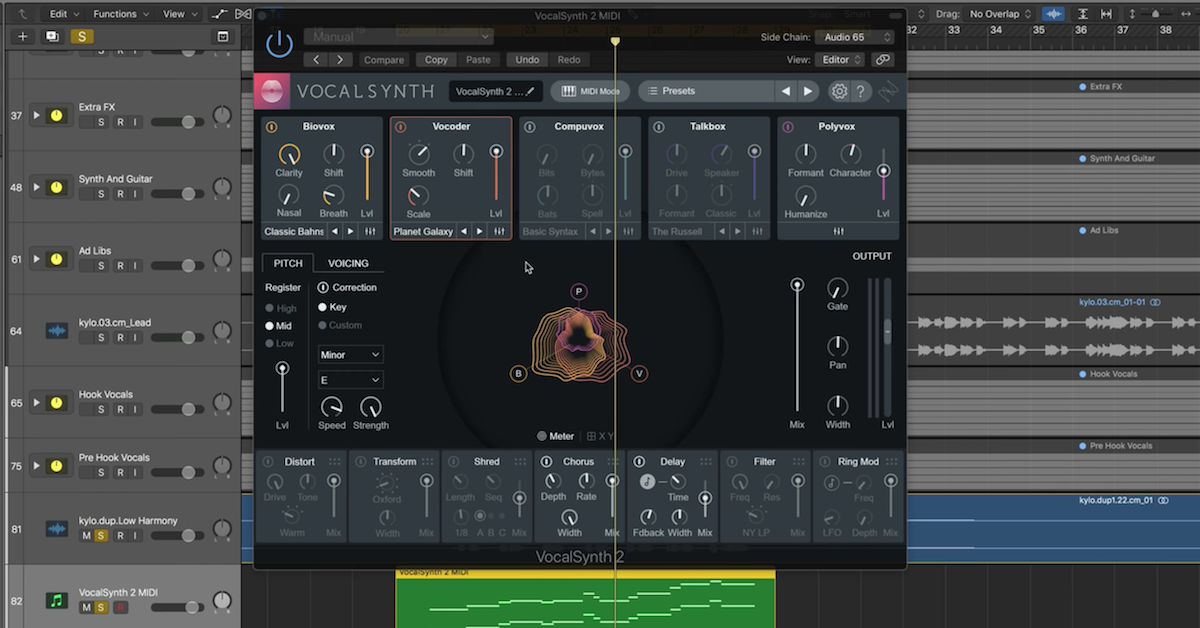The Basics of Step Sequencing (+ 9 Great Step Sequencers)
Article Content
Software-based Step Sequencers are rooted in traditional hardware step sequencing design and in particular drum machines. Each sound is activated by activating a step from the associated row or lane. The number of steps is user-defined and in more advanced sequencers, each row can have a different number of steps and different beat division values allowing for infinite variety as the sequence repeats.
For example, consider the simple case of two rows, one with seven steps and the other with eight steps. Starting together, the same juxtaposition of steps would not repeat until the 57th step:
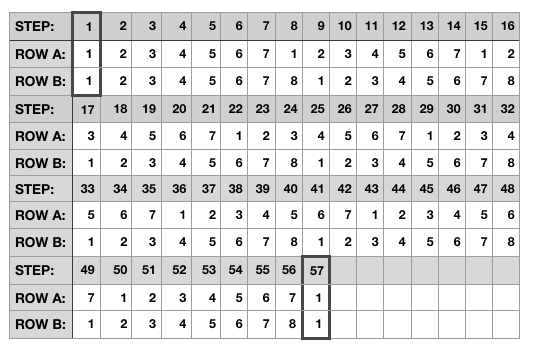
The least common multiple of the number of steps will identify the point after which the step sequences will both begin at 1. Three rows of 3, 5, and 7 steps would generate 105 unique combinations. It gets more complex when you change beat divisions, add glide effects, change event lengths with gate controls, add ties between events, etc. And we haven’t even discussed fully what each step can control.
Beyond simple note events (note number, velocity, duration), steps can affect literally any other parameter in the signal chain that can accept modulation data. Examples include filter cutoff, resonance, saturation settings, waveform morphing, panning and pitch-shifting. Swing settings can drastically change the feel of the sequence and accents can add even more complexity and interest to the rhythm.
Once you define the number of steps in a given row, most step sequencers will offer shortcuts to activate certain step patterns such as every downbeat, or every eighth note. There is usually a randomization option and perhaps a library of preset or user-defined patterns.
The underlying premise of step sequencers is that you can program patterns step-by-step instead of in realtime, although in many cases there is some crossover between the two ideas with live input being quantized to the nearest step.
But harnessing the real power of step programming requires thoughtful consideration of what will occur on each step, the rhythmic interaction between rows of varying length, and the ability to infuse a sense of humanity into an inherently mechanistic process, or not … (after all, what’s so great about humanity anyway).
Playing samples in real time with a set of drum pads or a keyboard is a very different process than step sequencing and much more performative in nature. Each method has its place based on context, genre and the creative needs of the artist.
Many virtual instruments such as Logic’s Alchemy, contain step sequencers as modulation sources alongside typical modulators like envelopes and LFO’s. Some step sequencers are sort of hybrid arpeggiators capable of melodic and harmonic generation. Some only generate MIDI or control data while others generate sound or access built-in samples. There are standalone sequencer applications, Kontakt-based instruments, MIDI effect plugins and iOS apps.
What follows are a few dedicated software-based step sequencers or instruments that make extensive use of sequencing that is worth exploring. Some are relatively new like MAP and XO, while others have been around for a while such as Ultrabeat (Logic Pro’s in-house step sequencer) and Rhythmology.
This is not intended to be an exhaustive list, but a small collection of well-designed applications I have personally used with a wide range of functionality and a variety of interface design approaches. There is an astounding array of step sequencing plugins and applications available from extraordinarily complex to relatively simple. If you haven’t given step sequencing a try, I encourage you to explore the possibilities.
M.A.P. by Sample Logic
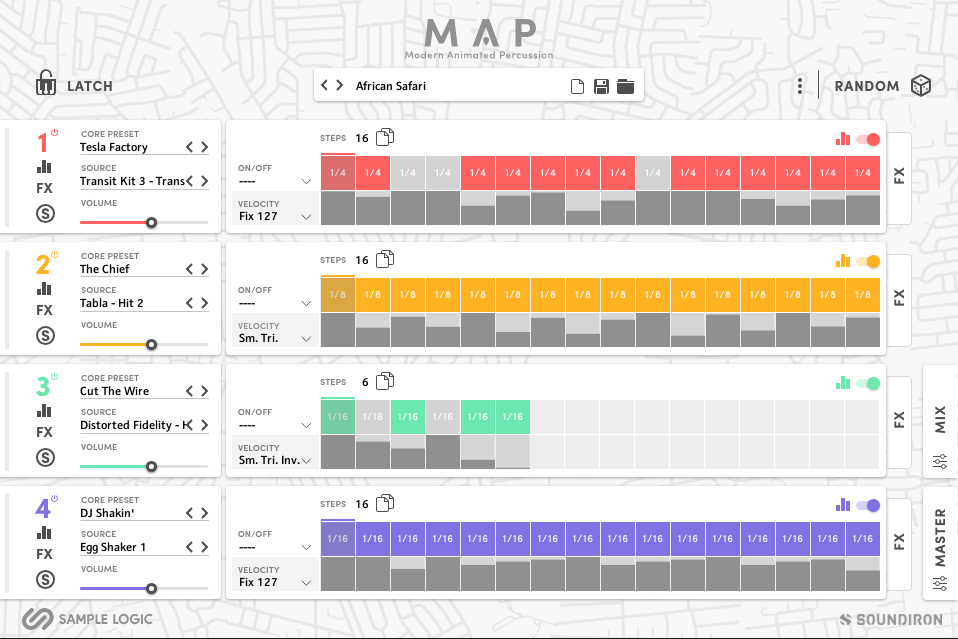
One company that comes to the forefront in step sequencing design is Sample Logic. Known for their Kontakt-based instruments such as Morphestra, XOSPHERE and Arpology, Sample Logic continues to develop innovative approaches that utilize multiple sound sources they refer to as cores. Their latest release is a collaboration with SOUNDIRON called M.A.P. (Modern Animated Percussion).
The MAP metaphor is carried throughout the interface design as a map pin icon is animated while the samples load. The instruments are based around four sound cores, a terminology consistent with other Sample Logic instruments.
The library contains over 6000 sounds and presets, and over 13,800 samples. This is not a loop-based instrument, instead, each sound is a one-shot sample triggered by a highly configurable step engine. There is an enormous searchable catalog of presets for core settings, source selection and sequence settings (referred as step animator presets).
Each of the four sequences can be started independently with a pre-mapped note key or all together with the C3 key. And each can have any number of steps from 1 to 128, providing endless permutations. Clicking the FX button for each core exposes six more effect-based sequencers, each with up to 16 steps.
The main sequencer for each voice has controls for stutters effects, transposition, panning, duration and, of course, note and velocity. The Mix window has controls for each voice including an Energy knob that seems to add exciter-like sparkle as well as volume. Finally, the Master window has its own effect chain to lend some cohesion to the mix. There is a welcome Randomization function that can be configured to affect specific cores or parameters.
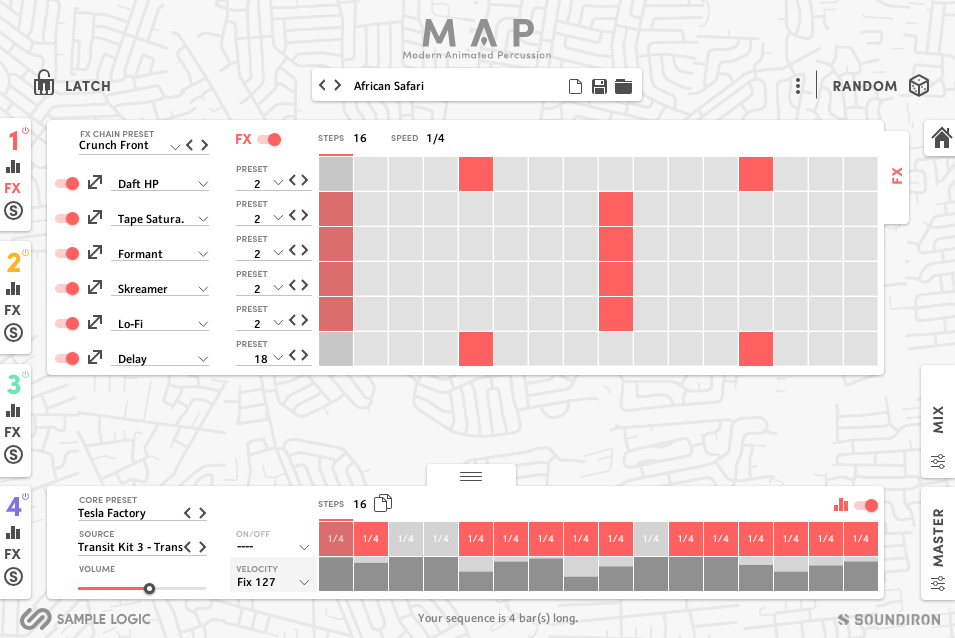
Sample Logic and SOUNDIRON have joined forces to create an incredible instrument in MAP. While it has the ability to make great sounds and infinitely complex rhythms instantly, the inviting and intuitive interface, source browser, configurability and randomization options encourage experimentation and inspire the creation of unique rhythmic and textural complexities.
Price: $299
Rhythmology by Sample Logic
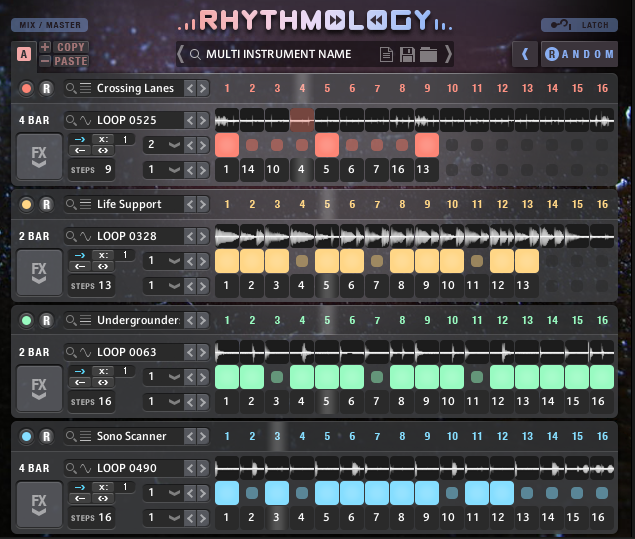
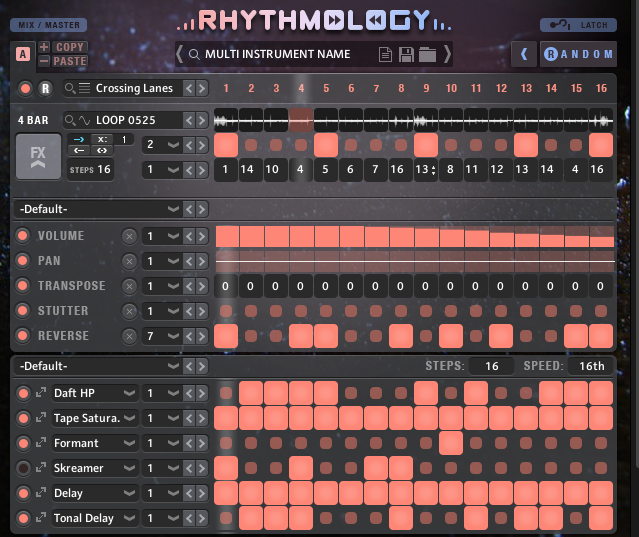
No discussion of step sequencing would be complete without looking at Sample Logic’s other step sequencer, Rhythmology.
Unlike M.A.P., this a loop-based set of four sequencers that can step through any of the included 1000 loop source files. It uses a sort of granular approach to sample playback in the context of step sequencing. The underlying architecture is similar to M.A.P., with four cores, an effects section with independent sequencers, stuttering, transposition, reverse and panning controls, and a mix and master FX section. Loops are sliced into 16 possible steps which can be reordered, reversed, transposed, and processed independently in a variety of ways. And as with many of Sample Logic designs, the Randomization options are well conceived and highly useful. The loop browser uses a tag-based search engine that can get to the sound you’re after quickly.
With Rhythmology, you can generate surprising melodic ideas, glitchy textures and evolving rhythmic structures that take on a life of their own.
Price: $299
XO by XLN Audio
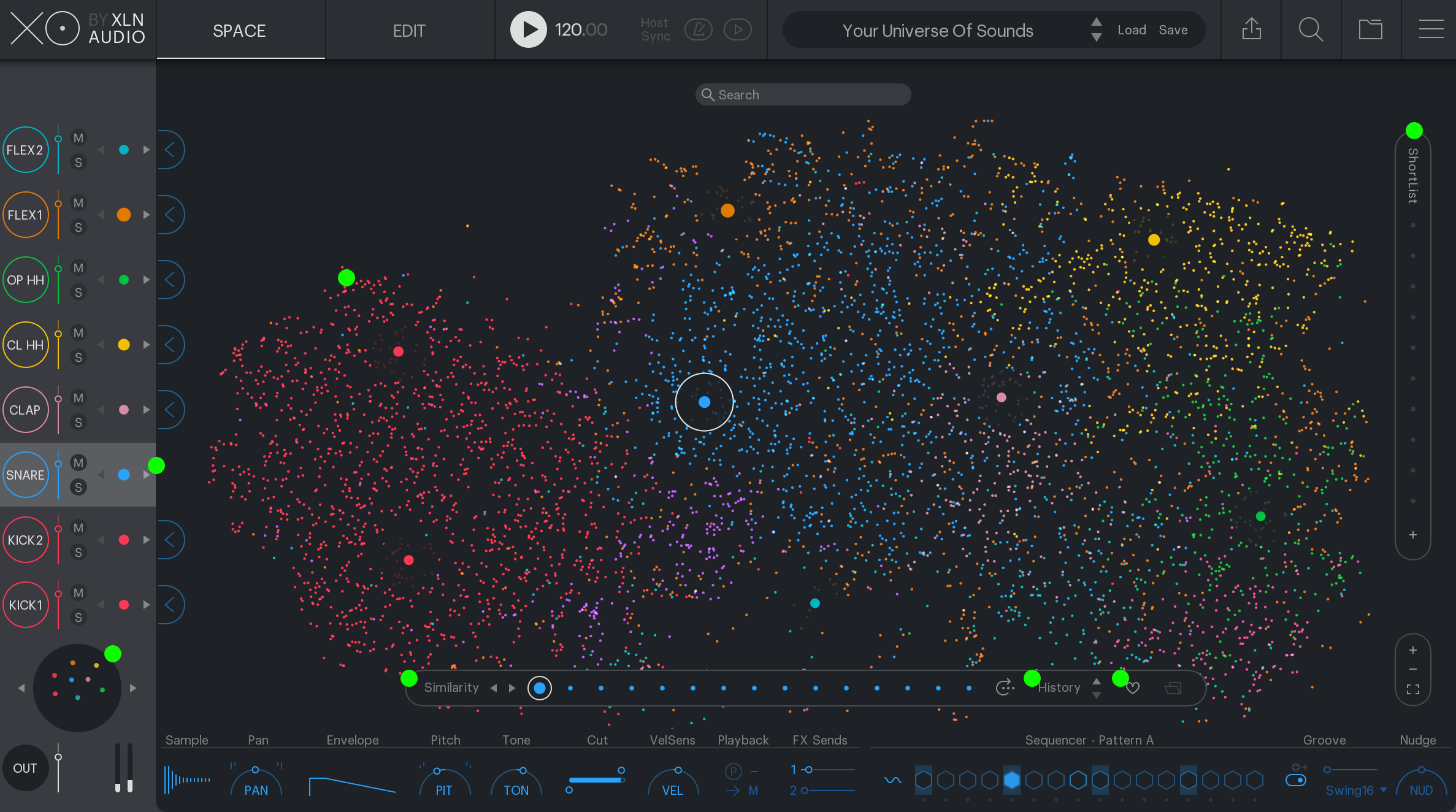
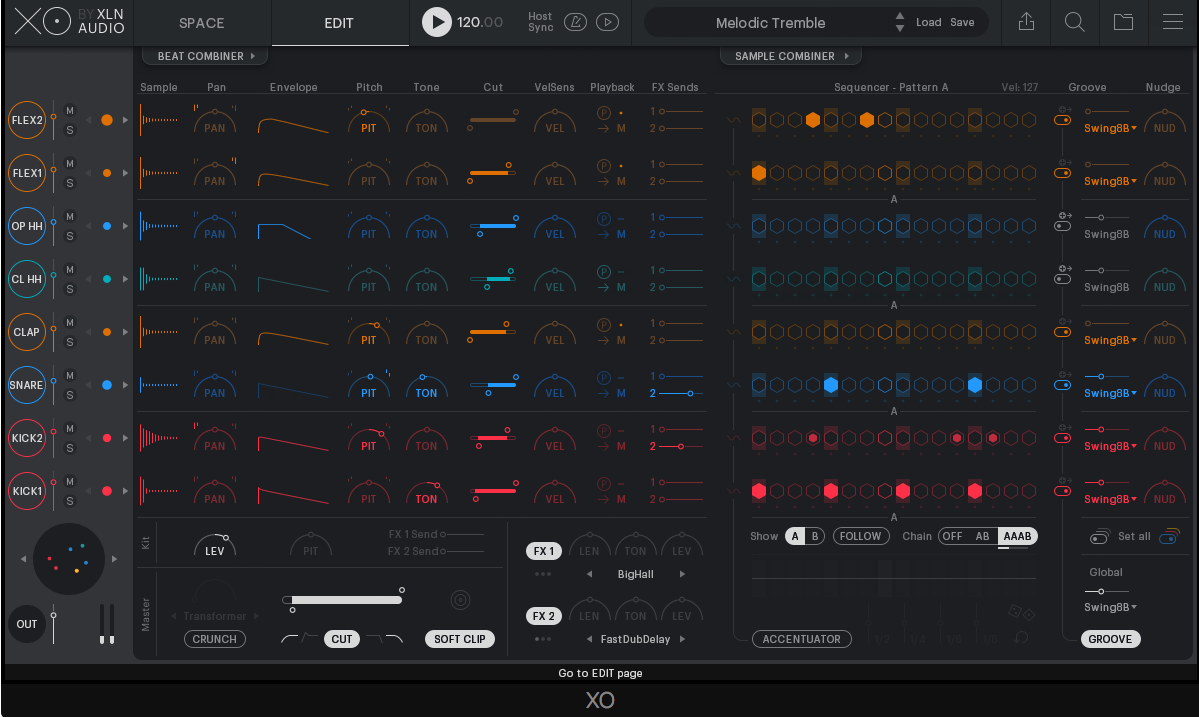
XO is a newly released step sequencer that uses a unique method of displaying and organizing sample choices based on color and physical proximity on the screen. Active samples are indicated by pulsing colored dots in the constellation of possibilities. It is a simple procedure to replace a current sample by simply clicking on a replacement and engaging the load icon to the right of the voice. This can be done on the fly as the sequence plays. Or you can use the hot swap button to load samples immediately as they are chosen.
There are eight voices that can be sequenced and 8746 factory samples included, organized in typical categories: Kick, Snare, Clap, Closed HH, Open HH, Cymbal, Tom, Perc, and FX. You can search for sounds based on these categories or refine the criteria based on frequency, length or something referred to as drumminess, which seems to indicate percussive sounds versus special FXs. You can also add your own samples if you choose.
XO excels at giving the user fast and intuitive access to thousands of sample choices in an elegant and thoughtfully-conceived interface.
Price: $179
Ultrabeat (included in Logic Pro)
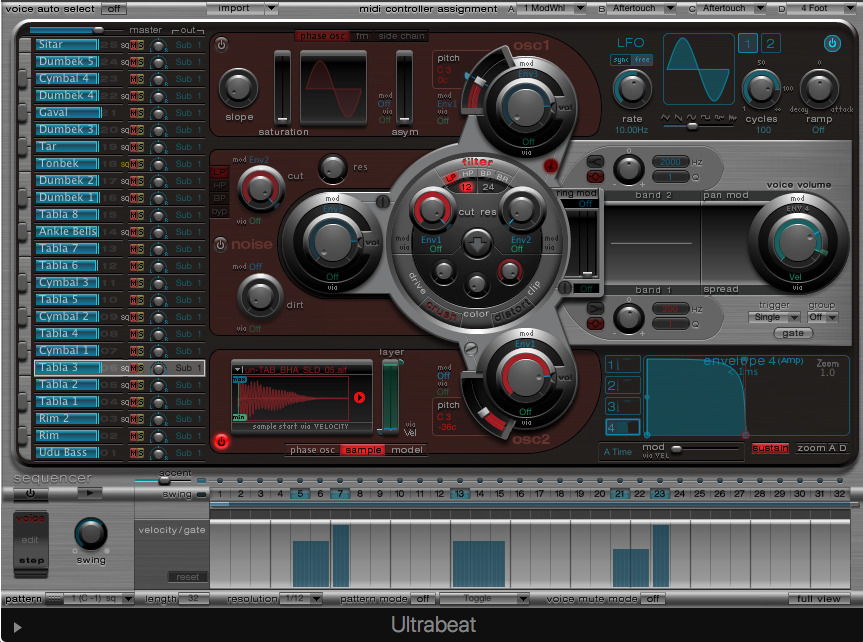
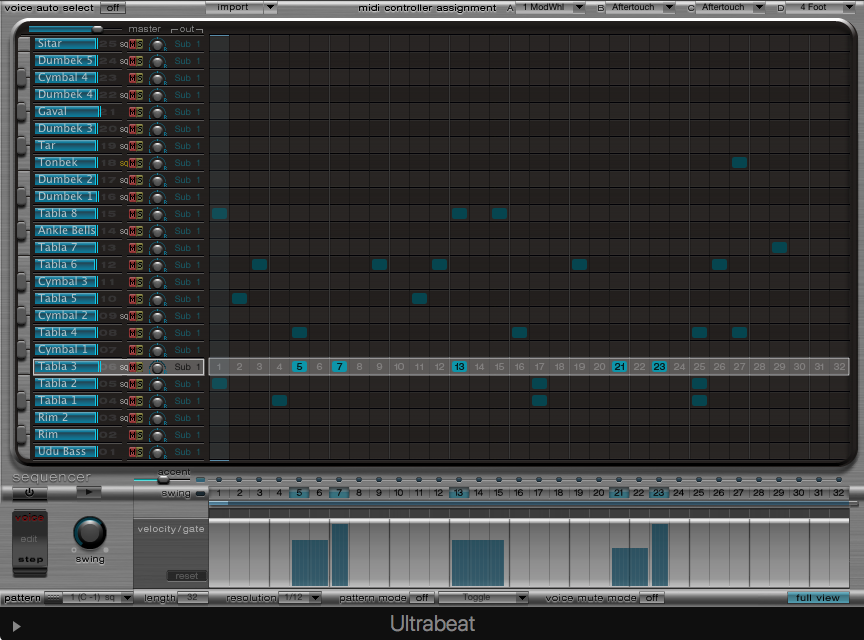
Ultrabeat has been included with Logic Pro for several generations and is a true workhorse for step sequencing with a ton of functionality. Each of the 25 voices is in essence, an independent synthesizer with a variety of sound sources such as morphable wave oscillators, a noise generator, a simple but effective physical modeling synthesizer, a multi-velocity sample playback engine with drag and drop capability, FM functionality and sidechain input from another track.
The 25th voice is distinct from the others and is assigned from MIDI note C3 and up allowing for chromatic playback of a melodic sound or bass. Each voice has a multi-mode filter, distortion section and robust modulation capability that includes two LFO’s and four envelope generators. When you do the math that translates to 50 LFO’s and 100 envelope generators!
There are several short cuts to step generation accessible by right-clicking on the first step of a row to quickly activate patterns or random steps. Engaging Step mode (as opposed to Voice Mode) allows for step-by-step modification of the voice parameters and associated effects. You can program key-switchable patterns and drag the little pattern icon directly into your session as a MIDI file for editing or re-voicing if you choose.
If instantiated as a multi-output device, every voice can be routed to its track with independent effects chains. The device is limited to 32 steps, but with all the other possibilities that is not much of a limitation.
Price: Included with Logic Pro for $199
Numerology 4 by Five12
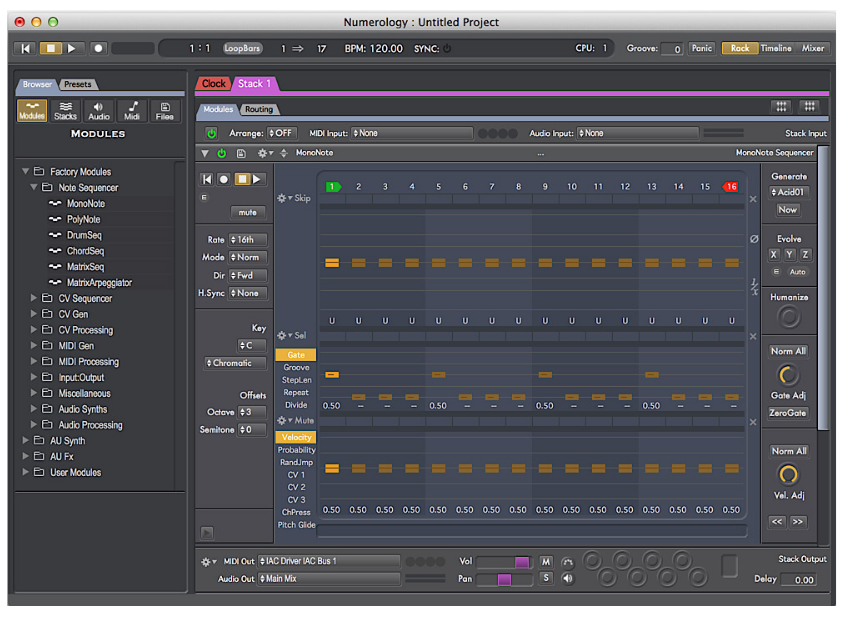
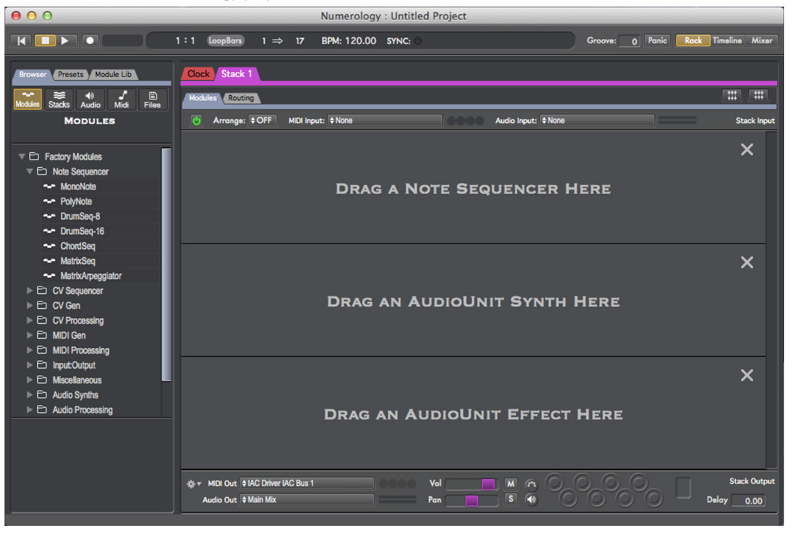
Jim Coker is the independent developer and sequencing madman behind the mother of all step sequencers, Numerology. It is available as a standalone that can communicate with your DAW via ReWire, as an AU or VST, and as an AU MIDI effect in Logic Pro (MacOS Mavericks or later).
It includes an astounding array of functions, modular routing flexibility, pattern generation that includes “evolve” processing, incredible modulation possibilities, and a collection of factory samples – drums and percussion, sfx, guitar, bass, pads, drones, loops and keys.
The underlying premise is based around “stacks” of modules that include a gate, CV or note sequencers, arpeggiators, MIDI processing, sample players, modulators, effects and many more. If you want to construct your own complex of sequencers, this collection of modules should give you all the tools you need. As with most applications capable of this level of complexity, the learning curve is relatively steep. But for those willing to take the time, the rewards will be well worth the effort!
Side Note: Although this article is focused on software, it should be noted that Five12 has also recently released the Vector Sequencer (pictured below), a Eurorack step sequencer that has garnered much acclaim in the modular world.
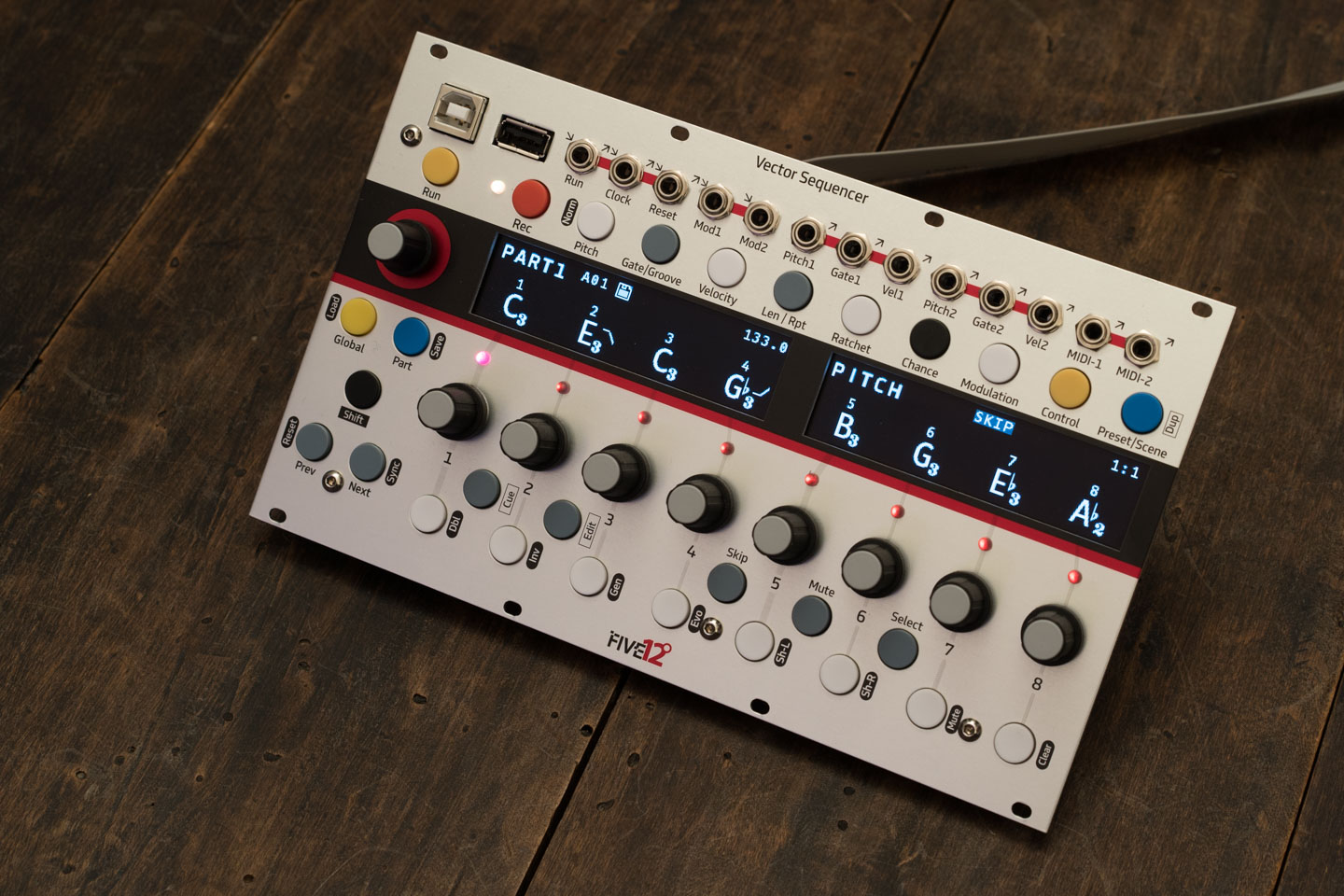
Price: Numerology 4 Pro – $199; Numerology 4 SE – $129
AEON Collection by Heavyocity
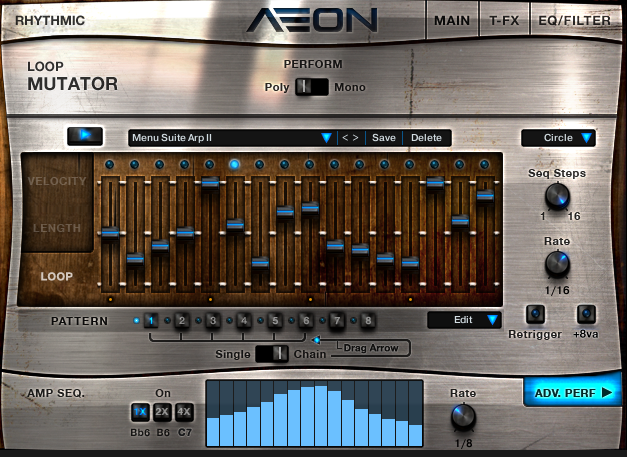
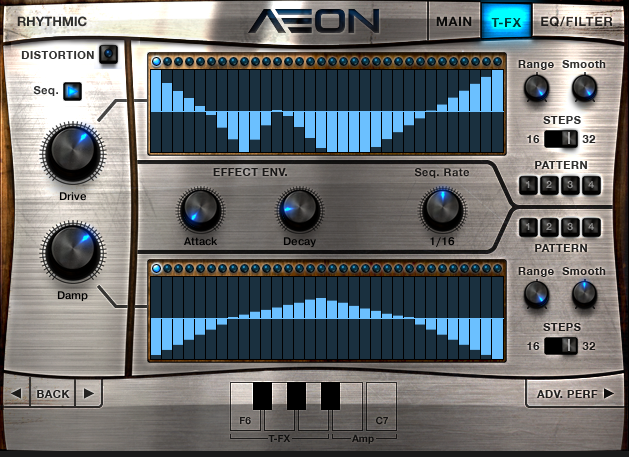
The AEON Collection of instruments from Heavyocity are loop-based instruments with several step sequencers operating behind the scenes, accessible from the Advanced Performance tab. The Loop Mutator is a 16-step sequencer that can affect velocity, length and loop selection. There are independent step sequencers for each of the effects including Distortion, LoFi, Filter, Panner and Pitch Mod.
The bundle comes with the AEON Melodic and AEON Rhythmic instruments which differ mainly in the nature of the included loops. Both instruments include the glowing Punish and Twist controls which add distortion-based effects and wave shaping functionality respectively. With instruments like NOVO Modern Strings, FORZO Modern Brass, Damage, Gravity, and the Master Sessions, Heavyocity has developed a reputation for meticulously produced samples and innovative interface design and the AEON Collection is no exception.
Price: $399
iOS-based Step Sequencers
The iOS music Production world is still growing and there is a shortage of iOS step sequencers out there. The prices are still incredibly low compared to traditional apps or plugins. Here are but a few worth considering:
Sequential for iPad
This is really an effects-based sequencer in which you can load in a sound file and engage one of 12 different effects on each step including LP Filter, HP Filter, Wave Transformer, Bit Crusher, Circuit Bender, Frequency Shifter, Sine Oscillator, Phase Oscillator, Noise Generator, Flanger, Resonator and Clean/Original.
There is very little control over each effect or generator, but thanks to the number of possibilities, preset patterns, and randomization options you can create some amazing glitchy goodness.
Price: $4.99
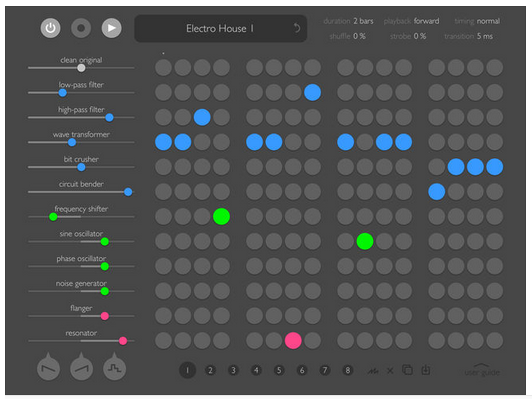
iSpark by Arturia
This is a sweet little step sequencer from Arturia with robust controls for altering the included sounds. It comes with 640 instruments and 40 kits that range from classic drum machines to acoustics kits. Add to this a 16-track mixer, a slew of effects, Ableton Link integration, 64-step capability and an elegant XY pad for real-time effects control and you’ve got an incredible device for less than $20!
Price: $19.99
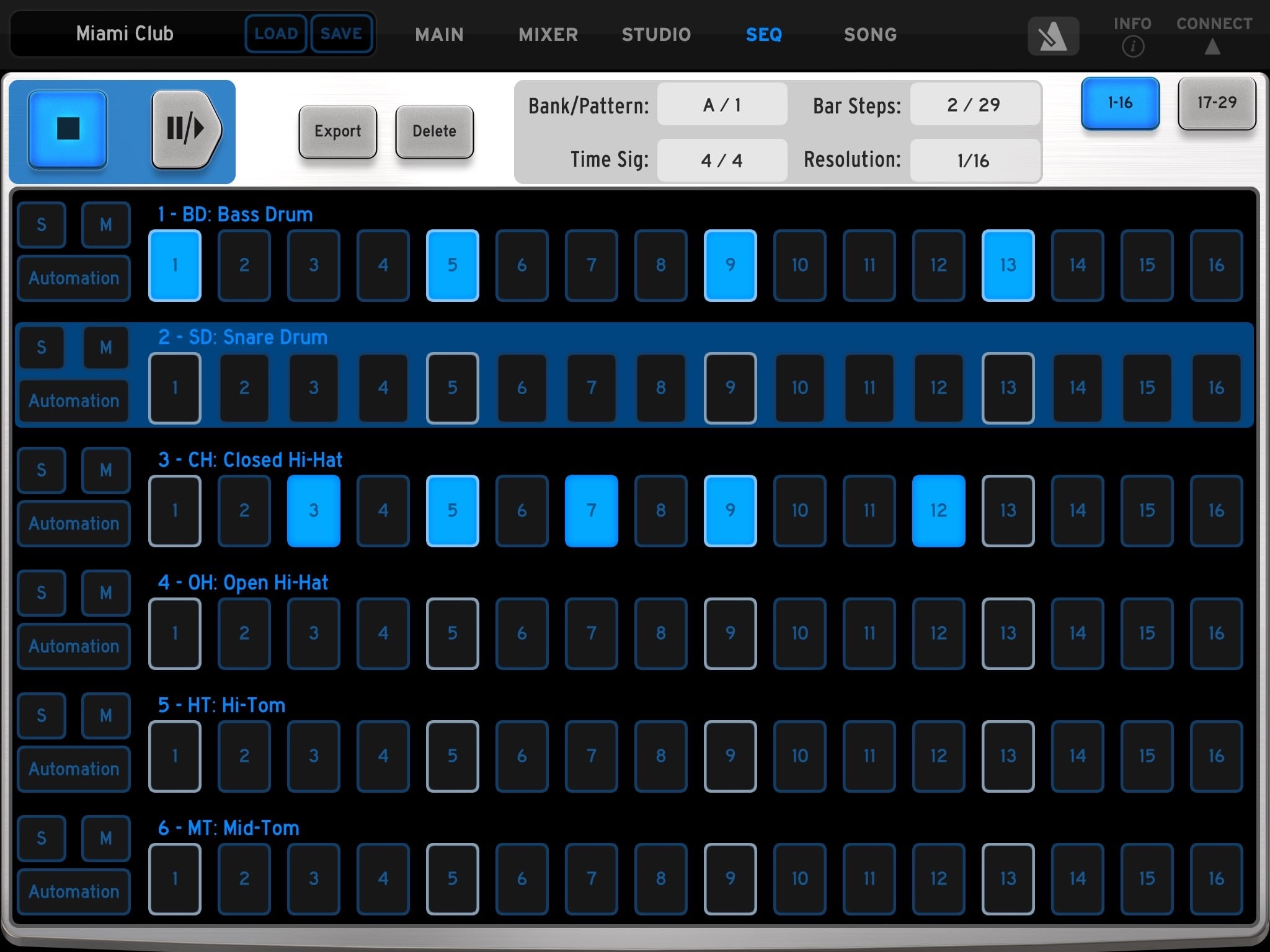
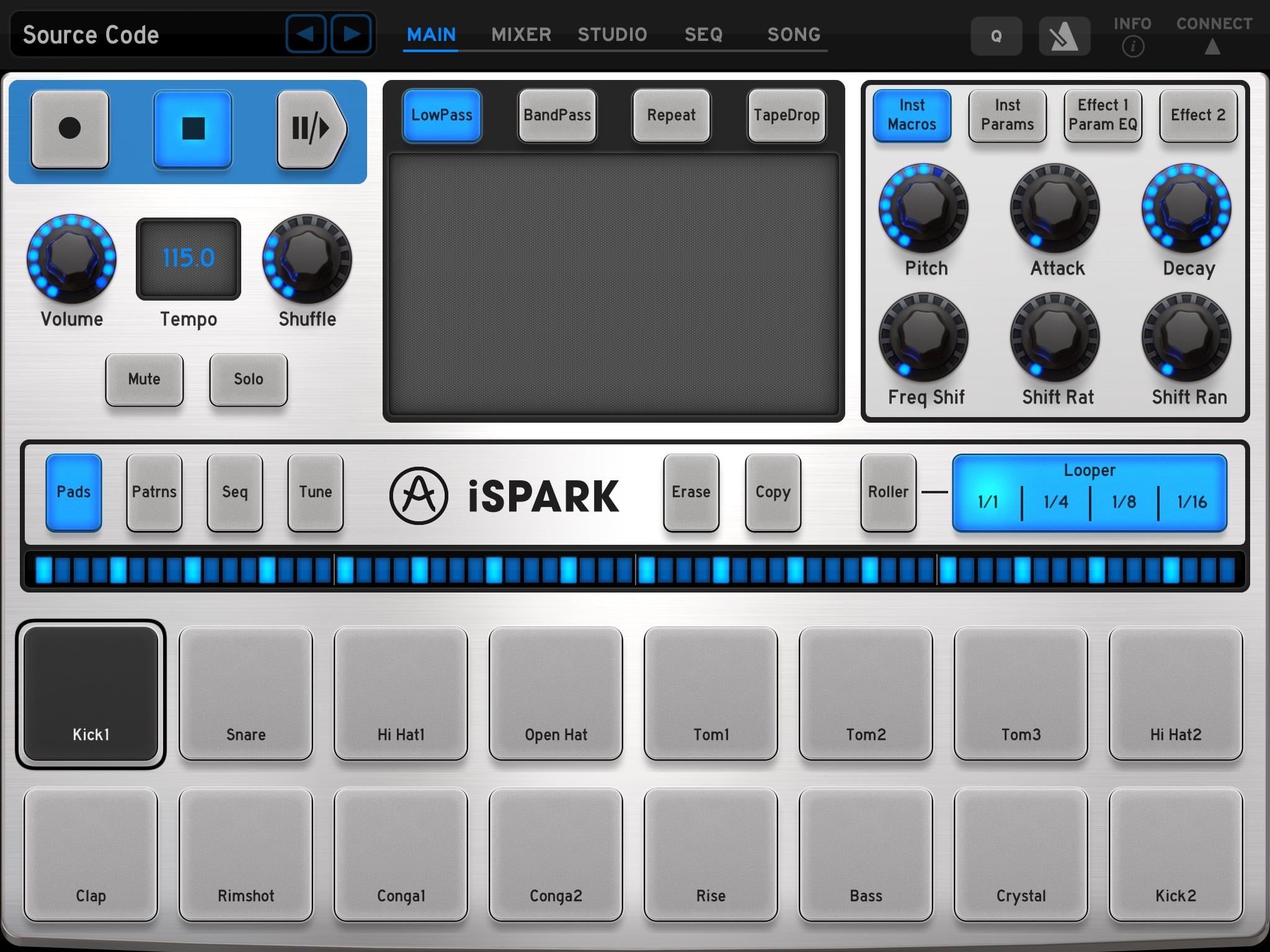
Rozeta Sequencer Suite
This is a brilliant collection of MIDI sequencers that includes a Baseline Sequencer, LFO Generator, Euclidean Drum Sequencer, Polyrhythmic Step Sequencer and some XY controllers and several other MIDI AU effects. This is a control device only and does generate its own sound, so you’ll have to have a compatible AU host such as AUM, Cubasis 2, ApeMatrix or Sequencism.
Price: $9.99
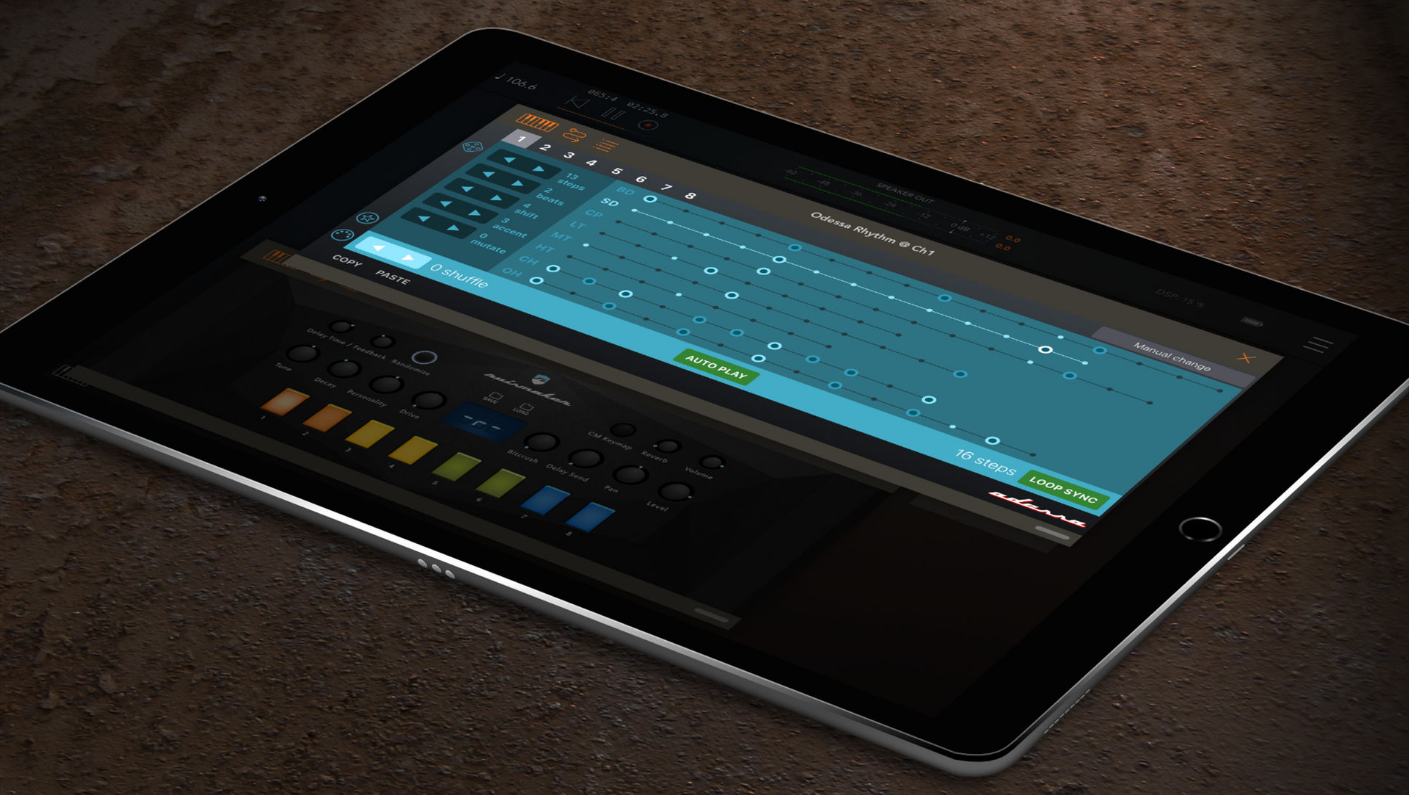
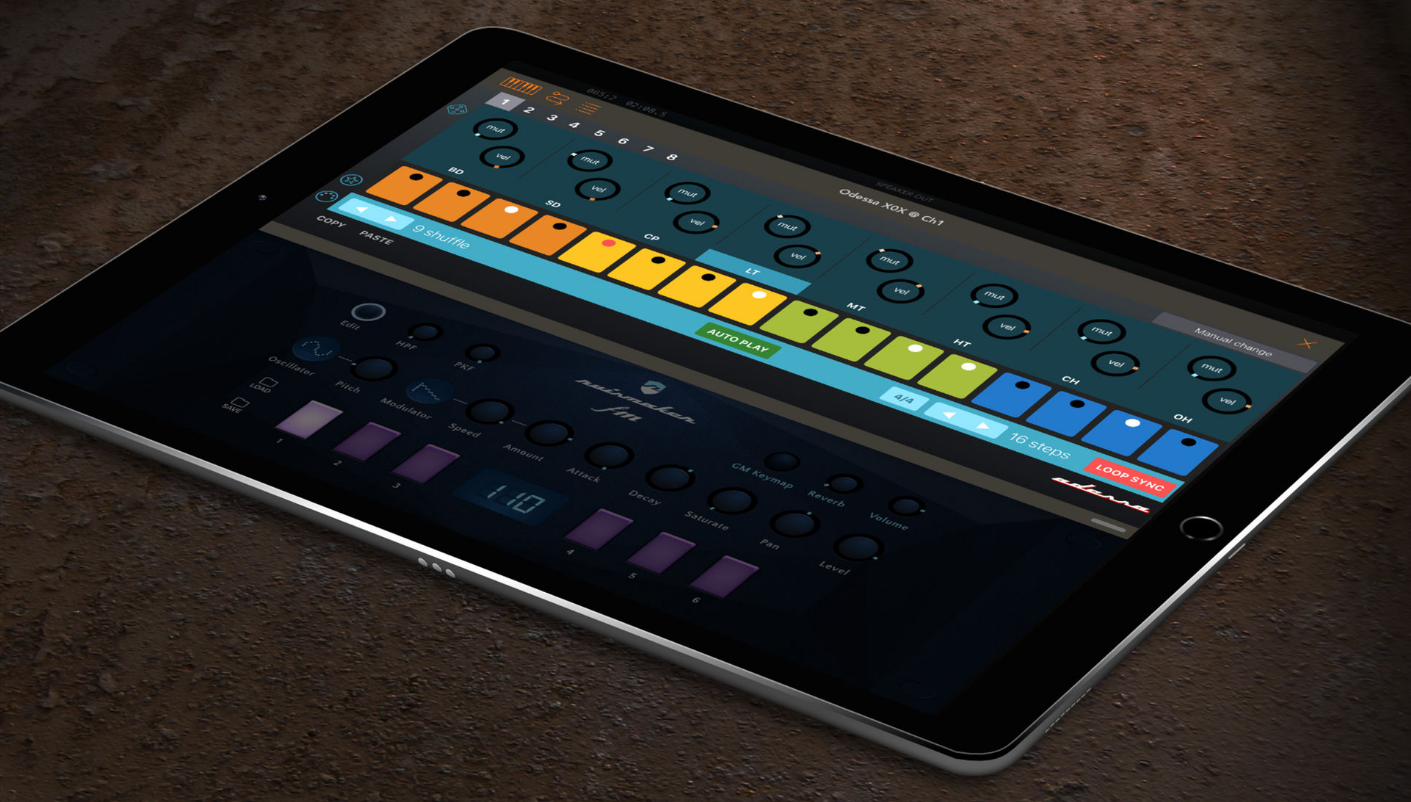
Build Your Own with Max/MSP
Max/MSP is a graphic object-oriented programming environment that allows for the creation of standalone applications, patches that can be shared and run with a free runtime version, and Max for Live devices that can work in Ableton like any other plugin. The language is vast and includes a multitude of objects for generating and manipulating MIDI, audio, video, and 3D animation. You can write patches for interactive performance, to control lighting and motors, to accept and convert data from sensors, and the list goes on.
In fact, you’d be hard-pressed to think of something that could not be done, at least in part, with Max/MSP. And yes, you can build yourself an incredible step sequencer as well!
The Book to Get
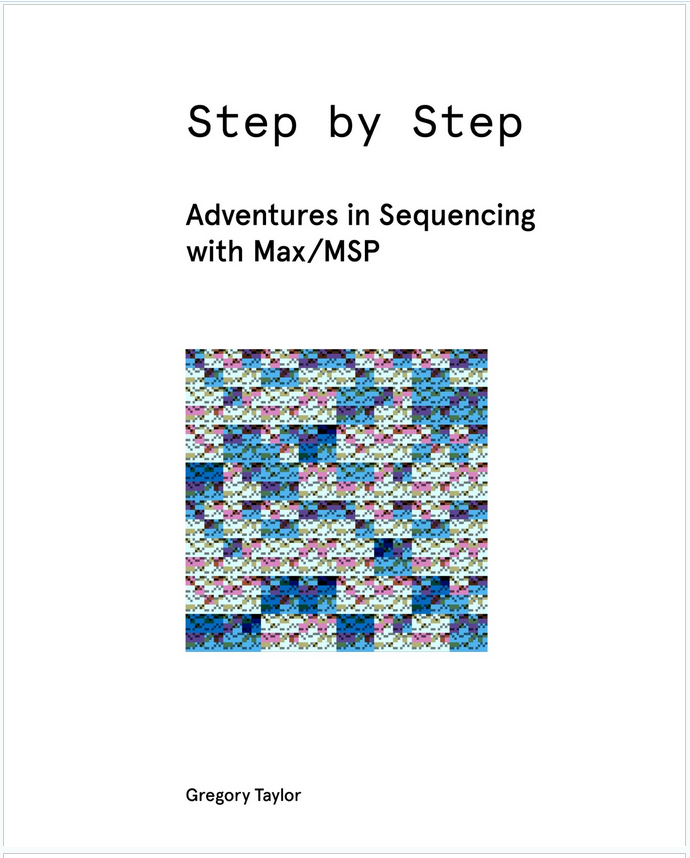
Step by Step: Adventures in Sequencing with Max/MSP is a recently released book by Gregory Taylor that tackles that very subject. Taylor is one of the main minds at Cycling 74’ which was purchased by Ableton a few years ago. I was initially concerned the move would affect support and development, as I expressed in my article in June 2017. But I’m happy to report that with the release of Max 8 last year, things have only gotten better and more and more Ableton users are beginning to explore the possibilities of creating custom M4L devices.
Taylor’s book is an exceptionally well-conceived exploration of step sequencing using Max/MSP that includes dozens of well-documented example patches. Simple ideas are “built out” by adding features and modifications for added utility or to suit specific needs. The book uses best programming practices such as encapsulation and the use of abstractions for a modular approach that maintains clarity in terms of signal flow and the logic underlying the patch. It assumes the reader has a fundamental knowledge of Max/MSP and an understanding of the basics, which can be gathered from the first few tutorials that accompany the program.
Having been hacking around with Max/MSP since before the MSP was added (MIDI only), I can count on one hand how many books on the subject that are worth the price. Step by Step is my new Number One. Taylor’s Occam’s Razor-like approach is a study in programming elegance that even the most seasoned Maxer can appreciate and find useful.
Conclusions
Step sequencing is an often misunderstood and underrated process capable of producing astounding rhythmic complexity, tight grooves and intricate parameter control. Many virtual instruments use it as a means of modulation and most people have reaped the sonic benefits of step sequencing whether they’ve realized it or not.
If you find that a preset in a complex synth such as Alchemy is somehow generating amazing rhythmic content, digging deep enough will likely expose modulation based on the step sequencer. If your main modus operandi has been piano rolls and drum pads, try digging into step sequencing for a change of pace and potentially renewed inspiration.
Check out my other articles, reviews and interviews
Follow me on Twitter / Instagram / YouTube



![XO by XLN Audio - Your Universe of Sounds [Announcement video, April 9th 2019]](https://i.ytimg.com/vi/kYVd01NhAKQ/hqdefault.jpg)





